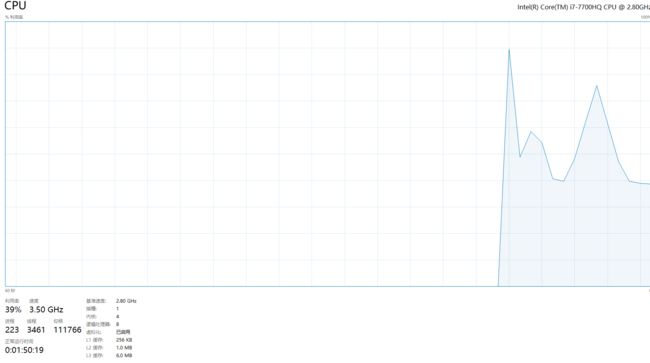笔者采用python3.6.7+TensorFlow1.12.0+CUDA10.0+CUDNN7.3.1构建环境
PC端配置为GTX 1050+Intel i7 7700HQ 4核心8线程@2.8GHZ
TensorFlow-gpu的安装经历实在是坎坷的很
首先显卡一定要支持
没想到的是GTX 1050TI,GTX 1070TI等主流显卡竟然都不支持
(还好我买的是GTX 1050)
(并没有暗示需要一块TESLA)
点这里查看CUDA支持列表
其次需要对好版本号,不同的TensorFlow版本对应的CUDA驱动程序版本号也有所不同
然而这还不够,还需要安装CUDNN才能完美运行,CUDNN的版本号和CUDA的版本号也要对好
CUDA离线版下载网址
CUDNN下载网址
但是下载CUDNN需要注册NVIDIA账号,那就点击join注册喽
注册的时候刚开始我使用了QQ邮箱,按道理这没毛病
但是到了验证邮箱一步又嗝屁了
你的验证邮件呢,验证邮件呢,邮件呢?????
经过百度多方查阅,原来不能用QQ邮箱
坑爹的是过了三个小时它又发过来了,没错,就是QQ邮箱,它发过来了。。。
不过我的163邮箱都注册好了。。。。。
所以就使用163邮箱注册了一个账号
终于顺利下载
下载完了也很懵逼
压缩包里面是长这样的:
使用这样的东西已经完全超出了我的能力范围了呀,怎么办
于是乎又百度,原来是放在CUDA的安装目录下呀。。。。
好的安装好了,听度娘说可以用安装目录\extras\demo_suite下的bandwidthTest.exe和deviceQuery.exe来检测
检测出来好像没什么问题
(图片中用了pause暂停来查看的)
然后环境搭载完成,到了万众瞩目的安装环节
pip install tensorflow-gpu
当然是需要卸载之前的版本的tensorflow 的
20KB/s的高速下了不知道多久
反正最后是装好了
大概是这样的
![]()
看起来还不错有没有
但是运行一下吧
。。。。。。。
下面的错误我都不忍心看,红了一片。。。。。
(画面太过血腥,已被屏蔽)
然后继续求助万能的度娘
最后找到了这个帖子
Win10 +VS2017+ python3.66 + CUDA10 + cuDNNv7.3.1 + tensorflow-gpu 1.12.0
你早说不支持CUDA10.0嘛,害的我费那么大力
于是就看了下这个贴子里面所附带的大佬创作的安装包
tensorflow_gpu-1.12.0-cp36-cp36m-win_amd64.whl
CUDA10.0+CUDNN7.3.1
然后又跑去重新安装CUDNN7.3.1
再cd到安装包目录下
pip install tensorflow_gpu-1.12.0-cp36-cp36m-win_amd64.whl
效果拔群,最终安装完成
如图
(当时看到可把我激动惨了)
至此安装完成
既然安装了就来测试一下喽,不测试的话显得自己很捞
求助度娘找到了大佬写的五层卷积神经网络的代码
Tensorflow对比AlexNet的CPU和GPU运算效率
为了简便起见,就直接放经过我魔改的大佬的代码
1 from datetime import datetime 2 import math 3 import time 4 import tensorflow as tf 5 import os 6 #os.environ["CUDA_DEVICE_ORDER"] = "PCI_BUS_ID" 7 #os.environ["CUDA_VISIBLE_DEVICES"] = "-1" 8 batch_size = 32 9 num_batches = 100 10 # 该函数用来显示网络每一层的结构,展示tensor的尺寸 11 12 def print_activations(t): 13 print(t.op.name, ' ', t.get_shape().as_list()) 14 15 # with tf.name_scope('conv1') as scope # 可以将scope之内的variable自动命名为conv1/xxx,便于区分不同组件 16 17 def inference(images): 18 parameters = [] 19 # 第一个卷积层 20 with tf.name_scope('conv1') as scope: 21 # 卷积核、截断正态分布 22 kernel = tf.Variable(tf.truncated_normal([11, 11, 3, 64], 23 dtype=tf.float32, stddev=1e-1), name='weights') 24 conv = tf.nn.conv2d(images, kernel, [1, 4, 4, 1], padding='SAME') 25 # 可训练 26 biases = tf.Variable(tf.constant(0.0, shape=[64], dtype=tf.float32), trainable=True, name='biases') 27 bias = tf.nn.bias_add(conv, biases) 28 conv1 = tf.nn.relu(bias, name=scope) 29 print_activations(conv1) 30 parameters += [kernel, biases] 31 # 再加LRN和最大池化层,除了AlexNet,基本放弃了LRN,说是效果不明显,还会减速? 32 lrn1 = tf.nn.lrn(conv1, 4, bias=1.0, alpha=0.001 / 9, beta=0.75, name='lrn1') 33 pool1 = tf.nn.max_pool(lrn1, ksize=[1, 3, 3, 1], strides=[1, 2, 2, 1], padding='VALID', name='pool1') 34 print_activations(pool1) 35 # 第二个卷积层,只有部分参数不同 36 with tf.name_scope('conv2') as scope: 37 kernel = tf.Variable(tf.truncated_normal([5, 5, 64, 192], dtype=tf.float32, stddev=1e-1), name='weights') 38 conv = tf.nn.conv2d(pool1, kernel, [1, 1, 1, 1], padding='SAME') 39 biases = tf.Variable(tf.constant(0.0, shape=[192], dtype=tf.float32), trainable=True, name='biases') 40 bias = tf.nn.bias_add(conv, biases) 41 conv2 = tf.nn.relu(bias, name=scope) 42 parameters += [kernel, biases] 43 print_activations(conv2) 44 # 稍微处理一下 45 lrn2 = tf.nn.lrn(conv2, 4, bias=1.0, alpha=0.001 / 9, beta=0.75, name='lrn2') 46 pool2 = tf.nn.max_pool(lrn2, ksize=[1, 3, 3, 1], strides=[1, 2, 2, 1], padding='VALID', name='pool2') 47 print_activations(pool2) 48 # 第三个 49 with tf.name_scope('conv3') as scope: 50 kernel = tf.Variable(tf.truncated_normal([3, 3, 192, 384], dtype=tf.float32, stddev=1e-1), name='weights') 51 conv = tf.nn.conv2d(pool2, kernel, [1, 1, 1, 1], padding='SAME') 52 biases = tf.Variable(tf.constant(0.0, shape=[384], dtype=tf.float32), trainable=True, name='biases') 53 bias = tf.nn.bias_add(conv, biases) 54 conv3 = tf.nn.relu(bias, name=scope) 55 parameters += [kernel, biases] 56 print_activations(conv3) 57 # 第四层 58 with tf.name_scope('conv4') as scope: 59 kernel = tf.Variable(tf.truncated_normal([3, 3, 384, 256], dtype=tf.float32, stddev=1e-1), name='weights') 60 conv = tf.nn.conv2d(conv3, kernel, [1, 1, 1, 1], padding='SAME') 61 biases = tf.Variable(tf.constant(0.0, shape=[256], dtype=tf.float32), trainable=True, name='biases') 62 bias = tf.nn.bias_add(conv, biases) 63 conv4 = tf.nn.relu(bias, name=scope) 64 parameters += [kernel, biases] 65 print_activations(conv4) 66 # 第五个 67 with tf.name_scope('conv5') as scope: 68 kernel = tf.Variable(tf.truncated_normal([3, 3, 256, 256], dtype=tf.float32, stddev=1e-1), name='weights') 69 conv = tf.nn.conv2d(conv4, kernel, [1, 1, 1, 1], padding='SAME') 70 biases = tf.Variable(tf.constant(0.0, shape=[256], dtype=tf.float32), trainable=True, name='biases') 71 bias = tf.nn.bias_add(conv, biases) 72 conv5 = tf.nn.relu(bias, name=scope) 73 parameters += [kernel, biases] 74 print_activations(conv5) 75 # 之后还有最大化池层 76 pool5 = tf.nn.max_pool(conv5, ksize=[1, 3, 3, 1], strides=[1, 2, 2, 1], padding='VALID', name='pool5') 77 print_activations(pool5) 78 return pool5, parameters 79 # 全连接层 80 # 评估每轮计算时间,第一个输入是tf得Session,第二个是运算算子,第三个是测试名称 81 # 头几轮有显存加载,cache命中等问题,可以考虑只计算第10次以后的 82 def time_tensorflow_run(session, target, info_string): 83 num_steps_burn_in = 10 84 total_duration = 0.0 85 total_duration_squared = 0.0 86 # 进行num_batches+num_steps_burn_in次迭代 87 # 用time.time()记录时间,热身过后,开始显示时间 88 for i in range(num_batches + num_steps_burn_in): 89 start_time = time.time() 90 _ = session.run(target) 91 duration = time.time() - start_time 92 if i >= num_steps_burn_in: 93 if not i % 10: 94 print('%s:step %d, duration = %.3f' % (datetime.now(), i - num_steps_burn_in, duration)) 95 total_duration += duration 96 total_duration_squared += duration * duration 97 # 计算每轮迭代品均耗时和标准差sd 98 mn = total_duration / num_batches 99 vr = total_duration_squared / num_batches - mn * mn 100 sd = math.sqrt(vr) 101 print('%s: %s across %d steps, %.3f +/- %.3f sec / batch' % (datetime.now(), info_string, num_batches, mn, sd)) 102 def run_benchmark(): 103 # 首先定义默认的Graph 104 with tf.Graph().as_default(): 105 # 并不实用ImageNet训练,知识随机计算耗时 106 image_size = 224 107 images = tf.Variable(tf.random_normal([batch_size, image_size, image_size, 3], dtype=tf.float32, stddev=1e-1)) 108 pool5, parameters = inference(images) 109 init = tf.global_variables_initializer() 110 sess = tf.Session(config=tf.ConfigProto(allow_soft_placement=True, log_device_placement=False)) 111 sess.run(init) 112 # 下面直接用pool5传入训练(没有全连接层) 113 # 只是做做样子,并不是真的计算 114 time_tensorflow_run(sess, pool5, "Forward") 115 # 瞎弄的,伪装 116 objective = tf.nn.l2_loss(pool5) 117 grad = tf.gradients(objective, parameters) 118 time_tensorflow_run(sess, grad, "Forward-backward") 119 run_benchmark()
如果使用TensorFlow-GPU的话这个默认是用GPU运行的
GPU运行结果:
GPU使用率:
CPU使用率:
可以看出较为占用显存
将上面代码的6到7行注释解除即为CPU运行
CPU运行结果:
CPU利用率:
我2.8GHZ的CPU都跑到3.4GHZ了
这么对我的CPU真的好么
测试结果:
正向GPU运行时间效率是CPU运行效率的8.42倍
反向GPU运行时间效率是CPU运行效率的12.50倍
并且GPU运行模式下GPU占用率仅仅只有大约65%,CPU占用率仅仅只有45%左右
而CPU运行模式下CPU占用率长时间到达100%,且效率低下
看出GPU能够直接完爆CPU运行的
注意事项:
1.本次测试仅仅采用了卷积神经网络进行运行,不代表所有情况下GPU一定有优势;
2.鉴于CPU的瓶颈,可能CPU运行效率并不是非常理想,若采用更加高端的CPU运行效果可能会有大幅度提升;
3.仅代表作者个人观点,希望各位大佬能够评论或打赏哦。
2019-01-15 02:41:24 Author:Lance Yu









